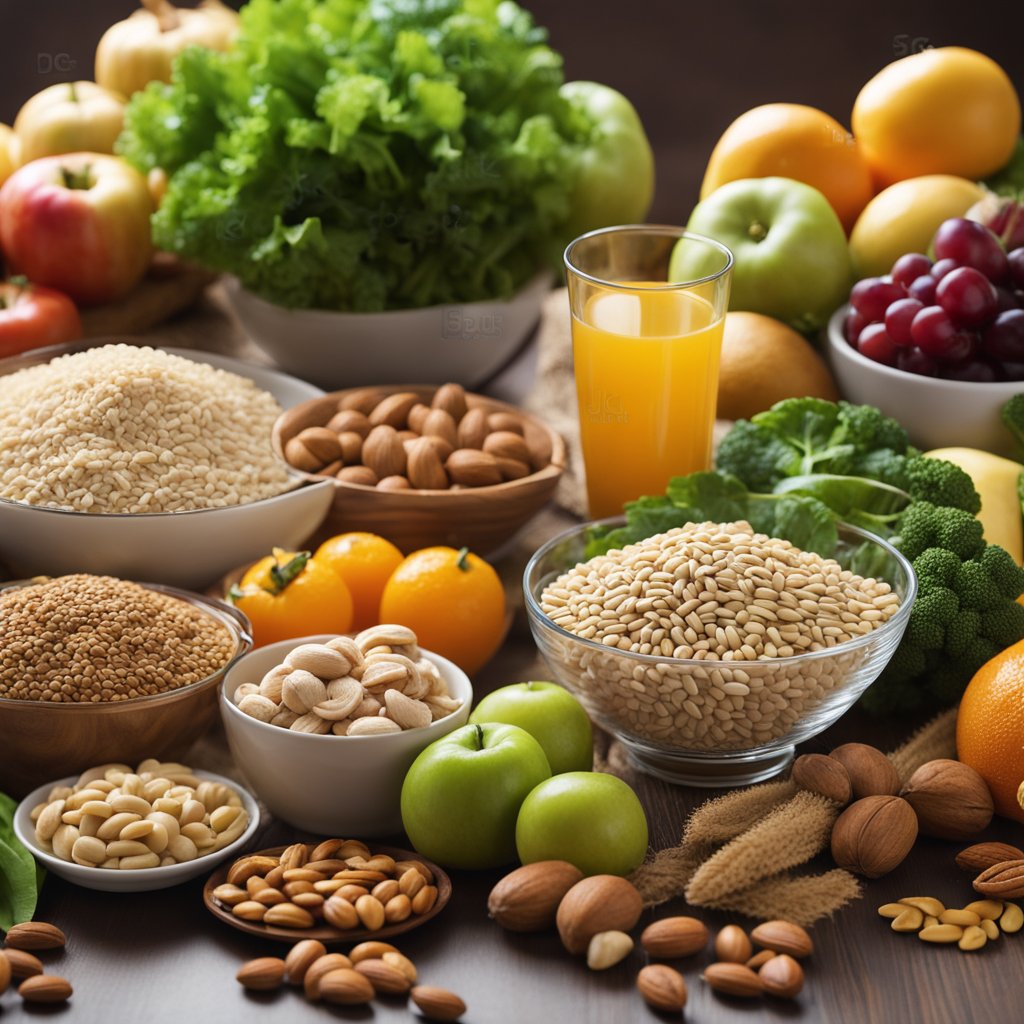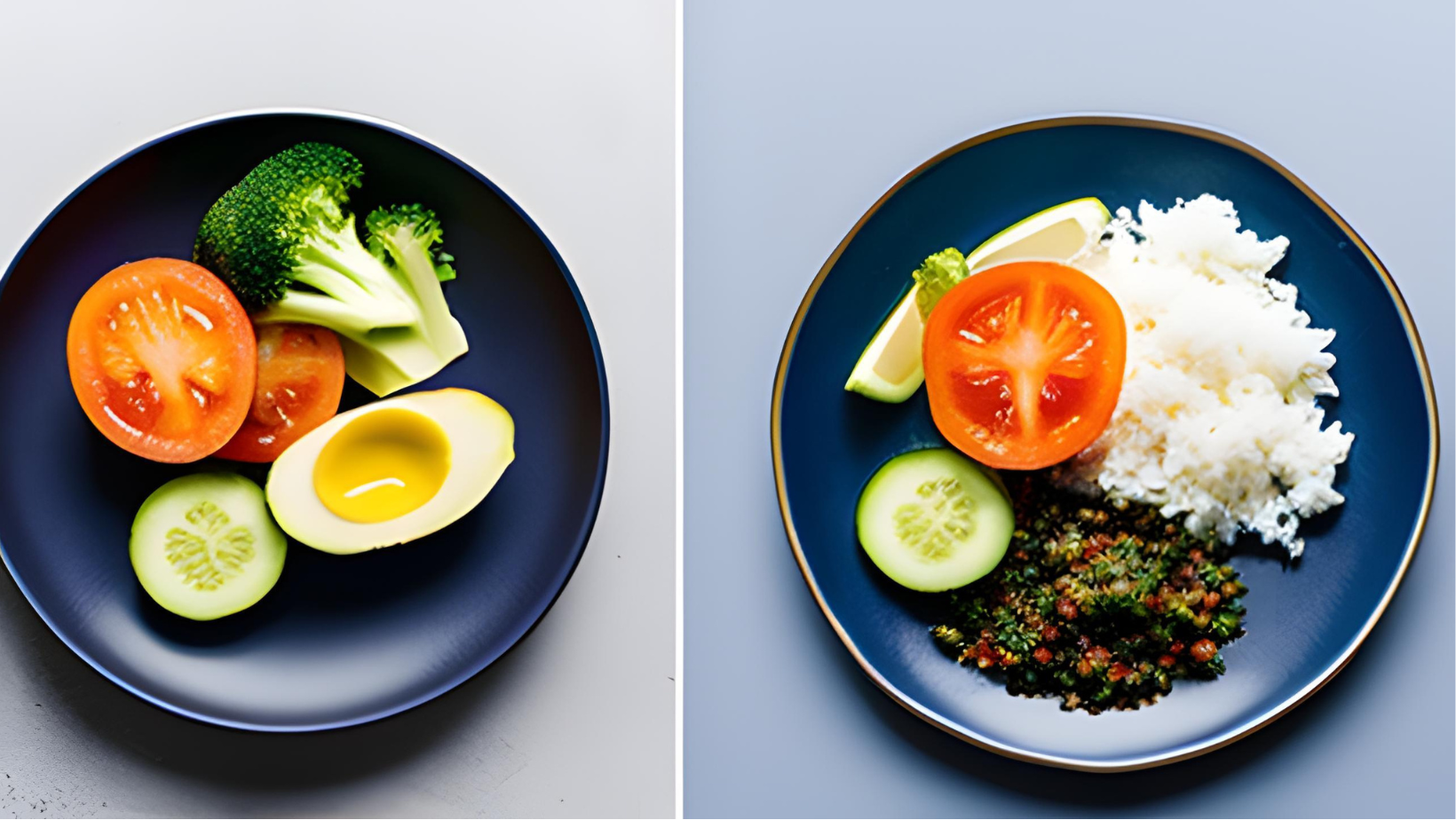Contents
Meal substitutions and variations for a healthier diet are becoming increasingly popular for those looking to switch up their diet or for those with dietary restrictions. With so many options available, it can be overwhelming to know where to start. However, by understanding the benefits of meal substitutions and variations, individuals can make informed choices about their health and wellness.
Meal substitutions can be a great way to add variety to one’s diet while still meeting nutritional needs. For example, substituting meat with plant-based protein sources like legumes or tofu can provide a similar amount of protein while also reducing the intake of saturated fats. Additionally, substituting refined grains with whole grains can increase fiber intake and provide more sustained energy throughout the day.
Variations in meals can also provide a range of health benefits. Incorporating a variety of colorful fruits and vegetables can provide a range of vitamins and minerals while also adding flavor and texture to meals. Experimenting with different herbs and spices can also add depth to dishes without adding excess salt or sugar. By incorporating meal substitutions and variations, individuals can improve their overall health and well-being while still enjoying a diverse and flavorful diet.
Understanding Meal Substitutions
Meal substitutions are a great way to add variety to your diet and make sure you get all the nutrients you need. Whether you’re looking to switch things up or have dietary restrictions, there are plenty of options available.
When it comes to meal substitutions, it’s important to keep a few things in mind. First, make sure you’re substituting with a food that has similar nutritional value. For example, if you’re swapping out chicken for tofu, make sure you’re still getting enough protein.
Another thing to consider is portion size. Some substitutions may be lower in calories or higher in fiber, which can make you feel fuller faster. Be mindful of how much you’re eating to make sure you’re still getting enough energy to power through your day.
Here are a few common meal substitutions:
- Meat substitutes: Tofu, tempeh, seitan, and other plant-based proteins can be used in place of meat in many recipes.
- Dairy substitutes: Almond milk, soy milk, and coconut milk are great options for those who are lactose intolerant or vegan.
- Grain substitutes: Quinoa, brown rice, and farro are all great alternatives to white rice or pasta.
- Vegetable substitutes: Zucchini noodles, cauliflower rice, and spaghetti squash are all low-carb options that can be used in place of traditional pasta.
Remember, meal substitutions can be a great way to add variety to your diet, but it’s important to make sure you’re still getting all the nutrients you need. Consult with a registered dietitian if you have any concerns about your diet.
Health Benefits of Meal Substitutions
Meal substitutions are a great way to improve one’s health and nutrition. They offer a variety of benefits, including weight management and dietary restrictions. In this section, we will explore the health benefits of meal substitutions.
Weight Management
One of the most significant benefits of meal substitutions is their ability to aid in weight management. By replacing high-calorie meals with lower-calorie alternatives, individuals can create a calorie deficit, which can lead to weight loss. Meal substitutions can also help individuals maintain their weight by providing a convenient, low-calorie option for meals.
Meal substitutions can be particularly helpful for individuals who struggle with portion control. By pre-portioning meals and snacks, individuals can reduce their calorie intake and avoid overeating. Meal substitutions can also help individuals make healthier choices by providing a convenient, pre-made option that is lower in calories and higher in nutrients.
Dietary Restrictions
Meal substitutions can also be beneficial for individuals with dietary restrictions. For example, individuals with lactose intolerance can substitute dairy milk with almond milk or soy milk. Individuals with celiac disease can substitute wheat-based products with gluten-free alternatives. Meal substitutions can also be helpful for individuals with food allergies, as they can provide a safe and convenient alternative to allergenic foods.
In addition to accommodating dietary restrictions, meal substitutions can also help individuals meet their nutritional needs. For example, individuals who do not consume enough fruits and vegetables can substitute a meal with a smoothie that includes a variety of fruits and vegetables. Meal substitutions can also be fortified with vitamins and minerals to ensure individuals are meeting their daily nutritional requirements.
In conclusion, meal substitutions offer a variety of health benefits, including weight management and dietary restrictions. By incorporating meal substitutions into their diet, individuals can improve their health and nutrition in a convenient and sustainable way.
Practical Meal Substitutions
When it comes to meal substitutions, there are a variety of options available to cater to different dietary needs and preferences. Here are some practical meal substitutions that can be made to accommodate various dietary restrictions.
Vegetarian and Vegan Alternatives
For those who follow a vegetarian or vegan diet, there are several options available to substitute meat and dairy products. Here are some alternatives:
- Tofu or tempeh can be used in place of meat in dishes such as stir-fries, curries, and tacos.
- Nutritional yeast can be used as a cheese substitute in dishes such as mac and cheese or on top of popcorn.
- Plant-based milks such as almond, soy, and oat can be used in place of dairy milk in recipes such as smoothies, oatmeal, and baking.
Low-Carb Substitutions
For those who follow a low-carb diet, there are several options available to substitute high-carb ingredients. Here are some alternatives:
- Cauliflower rice can be used in place of regular rice in dishes such as stir-fries, fried rice, and burrito bowls.
- Zucchini noodles or spaghetti squash can be used in place of pasta in dishes such as spaghetti and meatballs, lasagna, and pad thai.
- Almond flour or coconut flour can be used in place of regular flour in recipes such as pancakes, muffins, and bread.
Gluten-Free Alternatives
For those who follow a gluten-free diet, there are several options available to substitute gluten-containing ingredients. Here are some alternatives:
- Brown rice pasta or quinoa pasta can be used in place of regular pasta in dishes such as spaghetti and meatballs, mac and cheese, and pasta salad.
- Gluten-free oats can be used in place of regular oats in recipes such as oatmeal, granola bars, and cookies.
- Coconut aminos can be used in place of soy sauce in recipes such as stir-fries, fried rice, and marinades.
Overall, these practical meal substitutions can help accommodate different dietary needs and preferences without sacrificing flavor or nutrition.
Meal Variations and Their Importance
Meal variations are an essential aspect of a healthy and balanced diet. By varying the meals people eat, they can ensure that they are getting all the necessary nutrients from different sources. This section will explore the importance of meal variations and their benefits.
Cultural Variations
Cultural variations in meals are an excellent way to explore different flavors and cuisines. It is essential to incorporate different cultural dishes into meals to add variety and diversity to the diet. Some popular cultural dishes include:
- Italian pasta dishes
- Indian curries
- Chinese stir-fries
- Mexican tacos and burritos
By incorporating these dishes into meals, people can experience different flavors and textures and ensure that they are getting a balanced diet.
Seasonal Variations
Seasonal variations in meals are also crucial for a balanced diet. Eating seasonal fruits and vegetables ensures that people are getting fresh produce that is at its peak in terms of flavor and nutrients. Some popular seasonal dishes include:
- Summer salads with fresh fruits and vegetables
- Fall soups with root vegetables and squash
- Winter stews with hearty vegetables and meats
- Spring stir-fries with asparagus and peas
By incorporating seasonal dishes into meals, people can ensure that they are getting the freshest produce and a variety of nutrients.
In conclusion, meal variations are essential for a healthy and balanced diet. By incorporating cultural and seasonal variations into meals, people can experience different flavors and textures while ensuring that they are getting all the necessary nutrients.
Creating Your Own Meal Substitutions and Variations
When it comes to creating meal substitutions and variations, the possibilities are endless. By using different ingredients, seasonings, and cooking methods, you can create a variety of meals that are both healthy and delicious. Here are some tips for creating your own meal substitutions and variations:
- Start with a base: Choose a base for your meal, such as rice, pasta, or quinoa. This will serve as the foundation for your meal, and you can add different ingredients and seasonings to create different variations.
- Experiment with different proteins: Instead of using traditional proteins like chicken or beef, try using tofu, tempeh, or beans. These plant-based proteins are a great way to add variety to your meals and are often healthier than animal-based proteins.
- Use different vegetables: Don’t be afraid to experiment with different vegetables. Try roasting or grilling vegetables like Brussels sprouts, asparagus, or cauliflower for a different flavor and texture.
- Add different seasonings: Try using different herbs and spices to add flavor to your meals. For example, try using cumin and chili powder for a Mexican-inspired dish, or curry powder for an Indian-inspired dish.
- Use different cooking methods: Instead of always baking or frying your meals, try grilling, roasting, or sautéing them. This can add a different flavor and texture to your meals.
By following these tips, you can create a variety of meal substitutions and variations that are both healthy and delicious. Don’t be afraid to experiment and try new things – you never know what delicious meal you might come up with!
Conclusion
In conclusion, meal substitutions and variations are a great way to add variety to one’s diet and can be a useful tool for those looking to achieve certain health goals. By swapping out ingredients or using different cooking methods, individuals can create meals that are tailored to their tastes and dietary needs.
It is important to note that while meal substitutions and variations can be beneficial, they should not be considered a replacement for a balanced and nutritious diet. It is recommended that individuals consult with a healthcare professional or registered dietitian before making any significant changes to their diet.
When it comes to meal substitutions and variations, there are many options available. From using different types of grains and proteins to incorporating more fruits and vegetables, there are endless possibilities for creating healthy and delicious meals.
By experimenting with different ingredients and cooking methods, individuals can discover new and exciting ways to enjoy their favorite foods. Whether it’s swapping out traditional pasta for zucchini noodles or using cauliflower rice in place of regular rice, meal substitutions and variations can provide a fun and creative way to make meals more interesting and nutritious.


